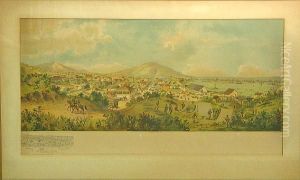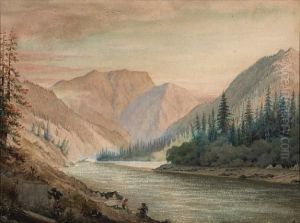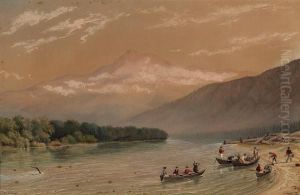George H. Burgess Paintings
George Henry Burgess was an English-born artist who moved to the United States and became known for his landscape paintings and illustrations, particularly of the California Gold Rush period. Born on June 8, 1831, in London, England, Burgess was exposed to art at an early age, as his father was a painter. This early exposure influenced Burgess to pursue his own career in art.
Burgess began his studies at the Somerset House School of Design and the Royal Academy in London. Seeking new opportunities and inspired by the allure of the American frontier, Burgess emigrated to the United States in the early 1850s. He traveled to New Orleans and then to San Francisco, California, during the height of the Gold Rush. The dynamic and transformative nature of California during this period provided ample inspiration for Burgess, whose works became valuable records of this historic era.
During his time in California, Burgess ventured into the Sierra Nevada mountains and mining towns, capturing the landscape and the bustling life of the miners. His sketches and paintings are considered important historical records, depicting the transformation of the California landscape and the impact of the Gold Rush on both the environment and society.
Burgess was also known for his panoramic views of San Francisco, which provide a detailed representation of the city before the great earthquake and fire of 1906. His works were exhibited in various venues, including the San Francisco Art Association and the Mechanics' Institute Fair.
George H. Burgess continued to paint and exhibit his works throughout his life. He passed away on April 22, 1905, in Berkeley, California. His legacy is preserved in the form of his art, which can be found in museum collections and archives, serving as a visual documentary of an era that shaped California and the American West.



